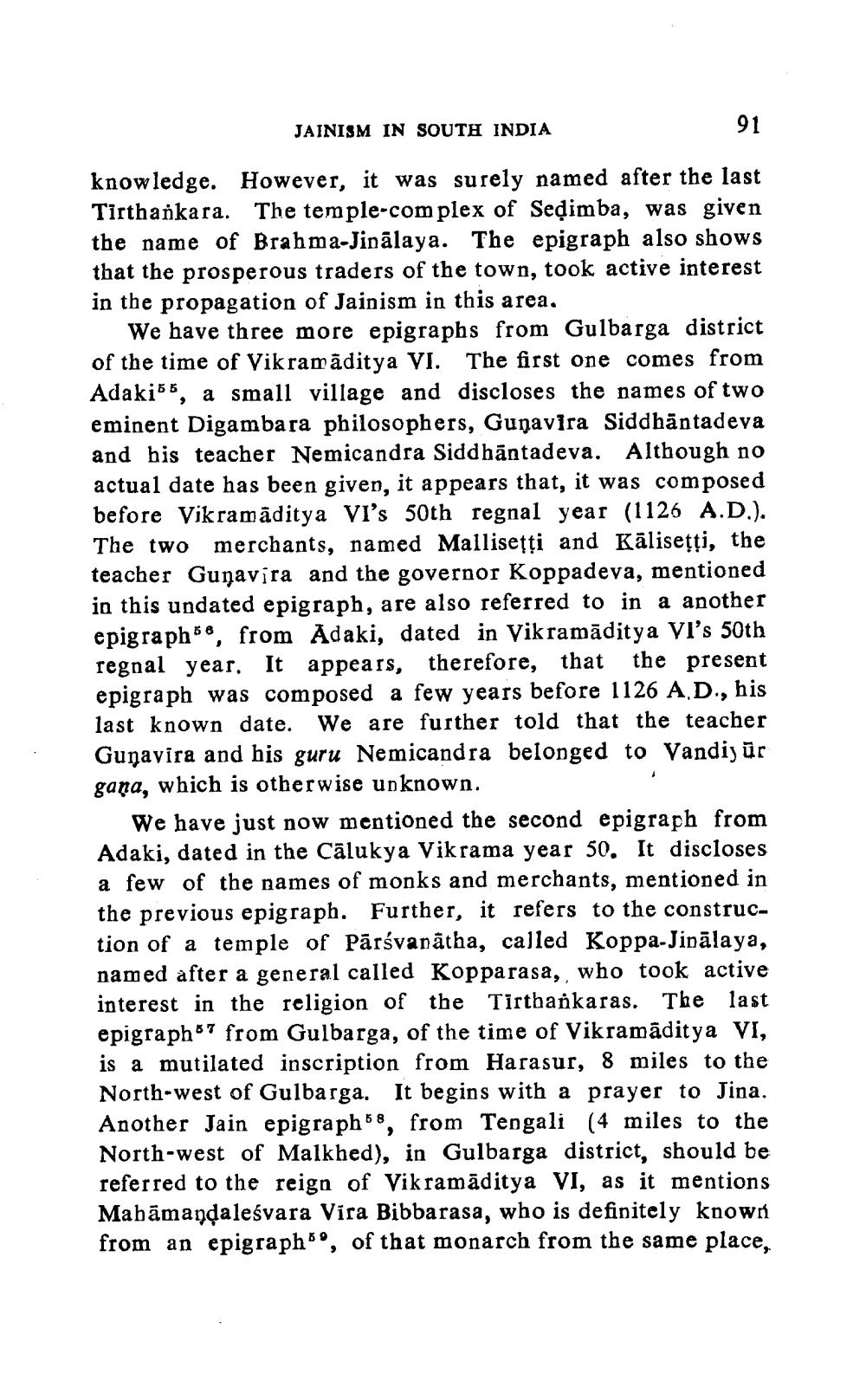________________
JAINISM IN SOUTH INDIA
91
knowledge. However, it was surely named after the last Tirthankara. The temple-complex of Sedimba, was given the name of Brahma-Jinālaya. The epigraph also shows that the prosperous traders of the town, took active interest in the propagation of Jainism in this area,
We have three more epigraphs from Gulbarga district of the time of Vikramāditya VI. The first one comes from Adakiss, a small village and discloses the names of two eminent Digambara philosophers, Gunavīra Siddhäntadeya and his teacher Nemicandra Siddhāntadeva. Although no actual date has been given, it appears that, it was composed before Vikramāditya yi's 50th regnal year (1126 A.D.). The two merchants, named Mallisețți and Kālisețți, the teacher Guŋavira and the governor Koppadeva, mentioned in this undated epigraph, are also referred to in a another epigraph 68, from Adaki, dated in Vikramāditya Vi's 50th regnal year. It appears, therefore, that the present epigraph was composed a few years before 1126 A.D., his last known date. We are further told that the teacher Gunavira and his guru Nemicandra belonged to Vandiyūr gana, which is otherwise unknown.
We have just now mentioned the second epigraph from Adaki, dated in the Cālukya Vikrama year 50. It discloses a few of the names of monks and merchants, mentioned in the previous epigraph. Further, it refers to the construction of a temple of Pārsvanātha, called Koppa-Jinālaya, named after a general called Kopparasa,, who took active interest in the religion of the Tirthankaras. The last epigraph57 from Gulbarga, of the time of Vikramāditya VI, is a mutilated inscription from Harasur, 8 miles to the North-west of Gulbarga. It begins with a prayer to Jina. Another Jain epigraph 68, from Tengali (4 miles to the North-west of Malkhed), in Gulbarga district, should be referred to the reign of Vikramāditya VI, as it mentions Mabāmandalesvara Vira Bibbarasa, who is definitely known from an epigraphy, of that monarch from the same place,




